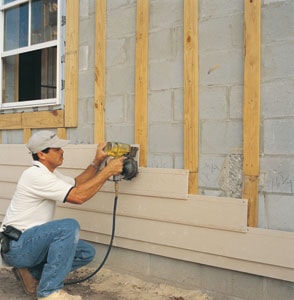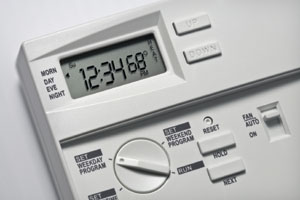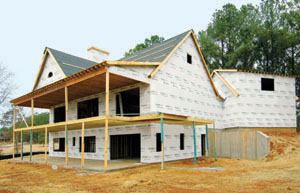Understanding the relationship between components and systems can affect the comfort, health, safety, durability and energy efficiency of your home.
You understand that your car is made up of interacting components and systems—when one component fails, it affects the performance of the entire vehicle. But did you know that the same goes for your house?
High energy bills, uneven temperatures from room-to-room, drafts, moisture, mold, mildew, poor indoor air quality, ice dams, pest infestations, seemingly uncontrollable humidity levels and even premature deterioration of building materials can all be the result of a breakdown in the relationship between the systems in your house. Often what seems like the obvious culprit—a prime fix for a competent do-it-yourselfer—is not actually the root cause. That obvious fix can not only fail to solve the original issue, it can actually put more strain on the relationship and compound the problem—or create a whole new set of problems.
To get it right, you need to consider the whole home using the house-as-a-system concept.

(Photo courtesy James Hardie)
How Healthy is Your Relationship?
There are three main systems that impact energy, comfort, health and safety: the building envelope (also called the building enclosure or shell), the heating, ventilation and air conditioning (HVAC) equipment and the occupants.
The building envelope consists of the roof, exterior walls and foundation of the house. Its role is to separate the indoor living environment from the outdoor elements. It blocks wind, rain, heat and cold, protecting the interior of the house and its occupants.

The HVAC provides comfort conditioning intended to make the living space enjoyable. It provides heat in winter, and for those who have air conditioning, cool in summer. It also circulates fresh air and regulates humidity levels.
The third system—the occupants—can affect the performance of the home by their behavior. Just living in the house has an impact, although some habits have more effect than others.
Unless you live in the most temperate and consistent of climates, the envelope will not keep you comfortable on its own. And if there is a problem with the building envelope, the HVAC cannot properly perform its comfort conditioning function. Additionally, if the occupants crank the thermostat and then leave the windows wide open, or place furniture or belongings over the registers and cold-air return vents, the HVAC doesn’t stand a chance.

Here’s a scenario … You’re uncomfortable so you reach for the thermostat, but the HVAC still can’t keep up. Your energy bills get higher. You notice condensation on windows. You find mold in the basement. The attic is damp and you worry about warping and rot. The kids seem to catch one cold after another. If your house were a car, the ‘check engine’ light would be blazing and mysterious rattles would be coming from under the hood.
So you spend money and a weekend or two putting in more insulation. The problem gets a bit better, but it isn’t solved. You look at the condensation and wonder if you should get new windows. You install a new thermostat and think about replacing the old furnace with a high-efficiency model. You take the kids to the pediatrician for another round of antibiotics. Meanwhile, you’re still uncomfortable and your energy bills are still way too high.
The ‘process of elimination’ strategy to home-performance repairs can cost a lot of money and time without ever achieving the goal of a comfortable, healthy, safe and energy-efficient home. The alternative is to conduct a whole-home assessment to find those relationship problems and tackle them at the root cause.

One of the most common relationship problems between the envelope and HVAC is “uncontrolled” air leakage through the building envelope. In this scenario, that indoor air you pay to heat and cool escapes through gaps, cracks and holes in the building envelope. It’s “uncontrolled” because all the windows and doors (the intentional holes in the envelope) are shut and air is still escaping. The U.S. Government’s Energy Star program estimates uncontrolled air leakage can waste as much as 30 percent of the energy used to heat and cool an average American home. Another common problem is leaky ducts in forced-air HVAC systems. In a typical house, about 20 percent of the air that moves through the duct system is lost due to leaks, holes and poorly connected ducts, according to Energy Star.
Finding the Problems
A comprehensive whole-home assessment is best performed by a trained and qualified technician for two reasons:
1) Properly diagnosing home performance problems and prescribing solutions requires a background in specialist building science that most DIY’ers just do not have.
2) The job requires specialist (and often expensive) diagnostic tools—such as a pressurization blower door and infrared camera—that are not likely to be found in the average DIY tool kit.
What you can do to prepare for the comprehensive assessment is conduct an initial audit of your own. Start by writing down all the symptoms, including when and where in the house you notice them most. Make a list of any work that’s been done and when it was done—for example, you might note that you installed new insulation last fall, or converted the deck to a sunroom three summers ago, or changed from a window A/C to central air five years ago.
Pull together all your energy bills for the last year (the farther back you can go, the better) and look for usage patterns or changes that correspond with the symptoms, the previous work, or both. Double-check the age and rating on your HVAC equipment and household appliances and be sure you know the fuel types for each.
Walk through your house and look for clues—taking pictures as you go if you have a camera. Are there damp spots? Is dust collecting or is the carpet looking dirty near the baseboards? Is the snow melting in a weird pattern on the roof? Does the furnace make a funny noise or produce a strange smell when it’s running hard? Is one room particularly hot or cold? Which windows seem to carry the most condensation?
When you present your findings to your specialist home performance contractor, he or she should listen carefully, take good notes and ask follow-up questions as part of the homeowner interview before starting the physical assessment. They’ll probably also evaluate your energy bills and ask some questions about that third system—the occupants and their behavior—either before or after the physical audit.

The comprehensive assessment will start with a thorough walk-through—both indoors and out. The technician may use an infrared camera to get a visual on temperature differences in different areas, conduct a blower door test to depressurize the house to assess air leakage levels, and test for leakage in the duct work of forced-air HVAC systems. They may also perform other function and safety tests on HVAC equipment, including carbon monoxide levels and combustion back-draft testing.
At the end of the comprehensive whole-home assessment, your home performance contractor should be able to provide you with a scientific, objective view of the situation. They should be able to help you prioritize repairs in order—from must-do to nice-to-do—so you can solve the biggest problems without making smaller problems worse. They should also be able to guide you regarding which fixes are suitable for your particular DIY skill level, and which will require expert help—either from the contracting company who performed the assessment or from another qualified, trained source.
Show me the Money
Upgrading your home’s performance can increase its value and provide great rewards in terms of comfort, health, safety and energy savings. But it can also require an investment of money, time, or both. It’s worth investigating Federal, State and local homeowner incentive programs—many of which now offer increased funding thanks to the economic stimulus package introduced in February of 2009. You can visit the Database of State Incentives for Renewables & Efficiency (DSIRE) at www.dsireusa.org and click on your state on the map to find out what’s available in your area. You can also find a state-by-state index of participating Home Performance with Energy Star programs at www.energystar.gov.
Just be aware that many of these incentive programs will need you to register before your initial whole-home assessment is done, and then have another whole-home assessment performed after all the work is completed to ensure it was completed satisfactorily to the levels required by that specific program. Some programs also require the assessments and work be performed by contracting companies with specific qualifications, such as Building Performance Institute Certified Technicians or Accredited Contractors.
Understanding how your house works as a series of interconnected systems can help you identify the root cause of problems and find solutions to improve the comfort, health, safety, durability and energy efficiency of your home.
Editor’s Note: Larry Zarker is the CEO of the Building Performance Institute (BPI), an independent, not-for-profit organization committed to the improvement of home performance via training, certification, accreditation and quality assurance programs for residential contractors and their customers. Learn more at www.bpi.org.



